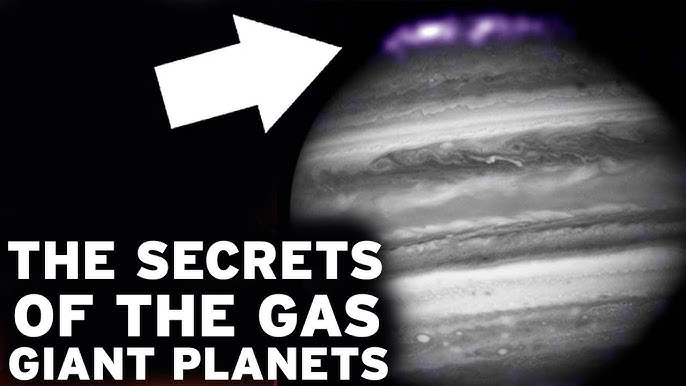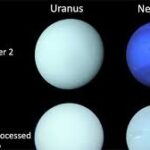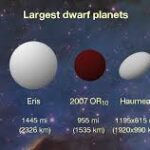When we think about the vastness of our solar system and the mysteries that lie beyond, the term “Gas Giants” often comes into focus. But what exactly are gas giants, and why do they play such a significant role in the structure and evolution of our cosmic neighborhood? This article explores everything you need to know about gas giants, including their composition, differences, importance, and what we’ve discovered about them so far.
What Are Gas Giants?
A gas giant is a large planet composed mostly of hydrogen and helium, lacking a well-defined solid surface like Earth. These planets are known for their massive size, thick atmospheres, strong magnetic fields, and a high number of moons. In our solar system, Jupiter and Saturn are the most well-known gas giants, while Uranus and Neptune are sometimes referred to as “ice giants” due to their different chemical compositions, although they share many characteristics with gas giants.
. Despite the name, gas giants may have small rocky or metallic cores, but their vast gaseous atmospheres make up most of their mass and volume.
Jupiter: The King of the Gas Giants
Jupiter is not only the largest gas giant but also the largest planet in the solar systemIt consists mostly of hydrogen and helium and features iconic bands of clouds and the Great Red Spot a giant storm that has raged for centuries Jupiter’s strong magnetic field and fast rotation (completing one rotation in just under 10 hours) make it an intriguing subject of study for planetary scientists. NASA’s Juno mission, which has been orbiting Jupiter since 2016, continues to send back valuable data about its atmosphere, magnetosphere, and core structure.
Saturn: The Ringed Wonder
Saturn is the second-largest gas giant and is most famous for its stunning ring system, which is made up of ice, rock, and dust particles. These rings extend out to hundreds of thousands of kilometers but are incredibly thin, only about 10 meters thick in some places.
Like Jupiter, Saturn is mostly hydrogen and helium. It has at least 146 moons, with Titan being the most notable. Titan has a dense atmosphere and lakes of liquid methane, making it one of the most Earth-like worlds in terms of weather and surface activity.
NASA’s Cassini mission, which explored Saturn and its moons for over 13 years, revealed surprising details about the planet’s atmosphere, magnetic field, and the dynamic nature of its rings. The mission ended in 2017 with a dramatic plunge into Saturn’s atmosphere.
Uranus and Neptune: The Ice Giants
While Uranus and Neptune are often grouped with Jupiter and Saturn as gas giants, they are more accurately described as ice giants. Uranus is unique for its extreme tilt; it essentially rotates on its side. This leads to bizarre seasonal patterns where one pole faces the Sun for decades
. It has the strongest winds in the solar system, reaching speeds of over 2,000 km/h, and is home to the Great Dark Spot, another massive storm system.
Despite being relatively unexplored, both planets offer incredible insight into the nature of planetary formation and atmospheric science. NASA and ESA are considering future missions to visit these distant worlds.
Composition and Structure of Gas Giants
All gas giants have a layered internal structure:
- Outer Atmosphere: Made mostly of hydrogen and helium.
- Cloud Layers: Different gases condense at different altitudes, forming cloud bands of ammonia, methane, and water.
- Mantle: Beneath the clouds lies a thick layer of metallic hydrogen (in Jupiter and Saturn) or icy materials (in Uranus and Neptune).
- Core: A small, dense center made up of rock and ice.
These planets do not have solid surfaces, meaning that any spacecraft descending into their atmospheres would eventually be crushed by extreme pressure and heat long before reaching solid ground.
Importance of Gas Giants in the Solar System
Due to their immense gravity:
- Their gravitational pull likely protected inner planets from frequent comet collisions.
- They may have influenced the delivery of water and organic molecules to Earth through gravitational slingshots of icy bodies.
Moreover, gas giants are considered prime targets in the search for exoplanets (planets outside our solar system). Many of the first discovered exoplanets were “hot Jupiters,” gas giants orbiting very close to their stars. Understanding our gas giants helps us model these distant worlds.
Could Gas Giants Support Life?
While gas giants themselves are inhospitable due to their intense pressures, radiation, and lack of a solid surface, some of their moons might offer potential for life. Europa (orbiting Jupiter), Enceladus (Saturn), and Titan (Saturn) all have subsurface oceans or atmospheres that might be suitable for microbial life.
In particular, Europa’s ice-covered ocean and Enceladus’s geysers that shoot water into space have made them intriguing targets for upcoming missions, such as NASA’s Europa Clipper.
Future Exploration
Future missions will continue to explore gas giants and their moons. NASA’s Europa Clipper and ESA’s JUICE (Jupiter Icy Moons Explorer) are set to launch in the coming years. These missions aim to study the habitability and geology of Jupiter’s moons.
There is growing advocacy for missions to Uranus and Neptune, as they remain the least explored of the major planets. Such missions could launch in the 2030s and answer long-standing questions about ice giants and planet formation.
Conclusion
Gas giants are among the most awe-inspiring and mysterious objects in our solar system. From Jupiter’s swirling storms to Saturn’s iconic rings, and from the tilted world of Uranus to the windy depths of Neptune, these planets are key to understanding the past and future of planetary science. As we continue to send probes and telescopes into space, gas giants will remain crucial to unlocking the secrets of the cosmos.



